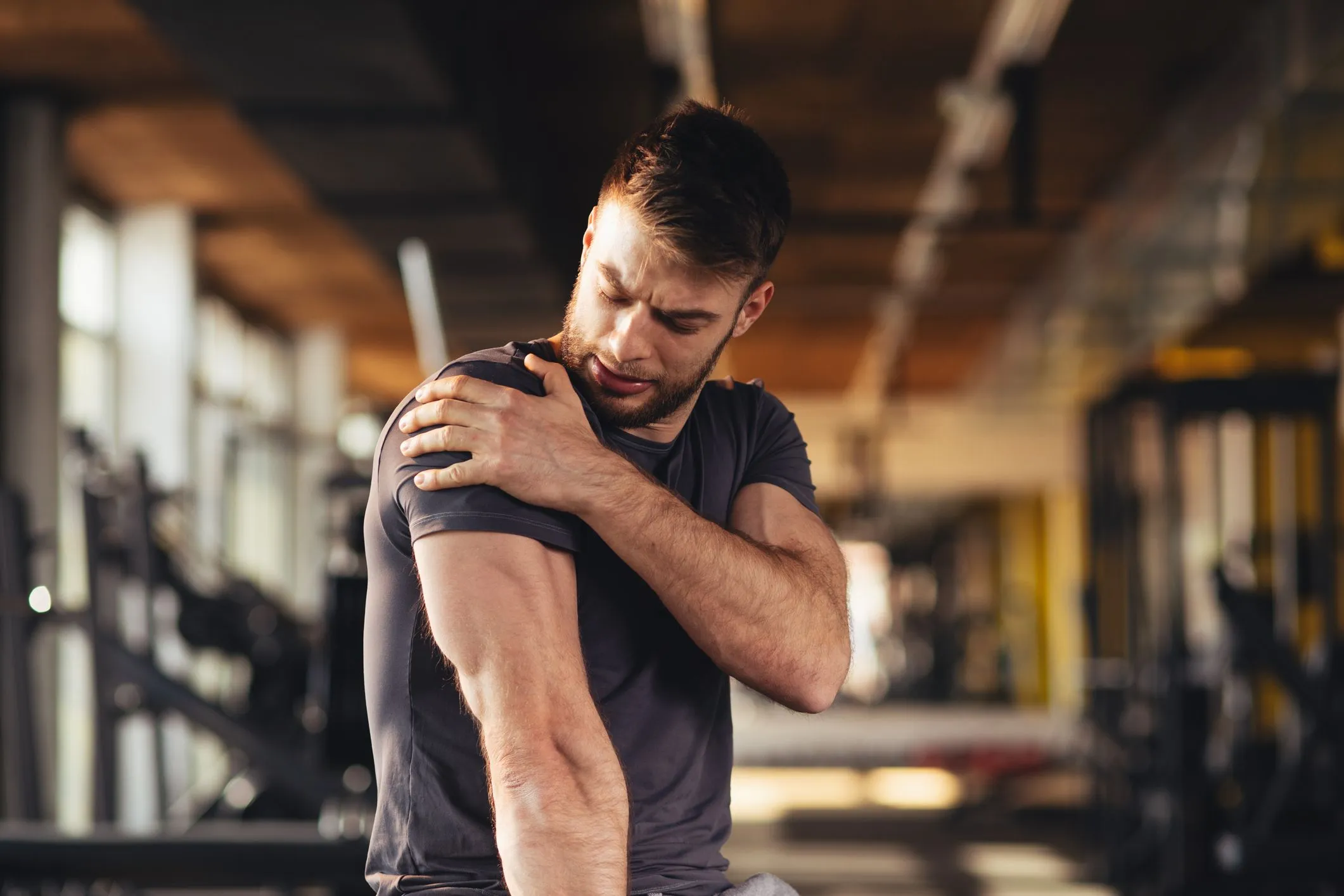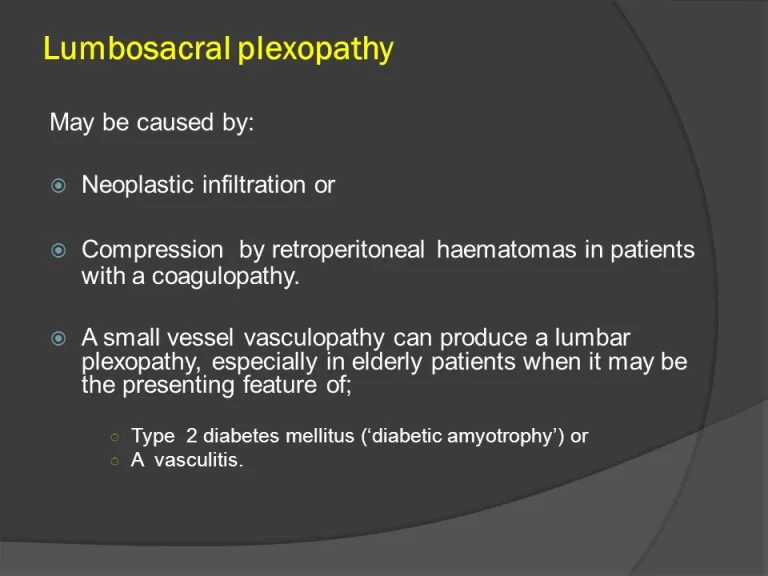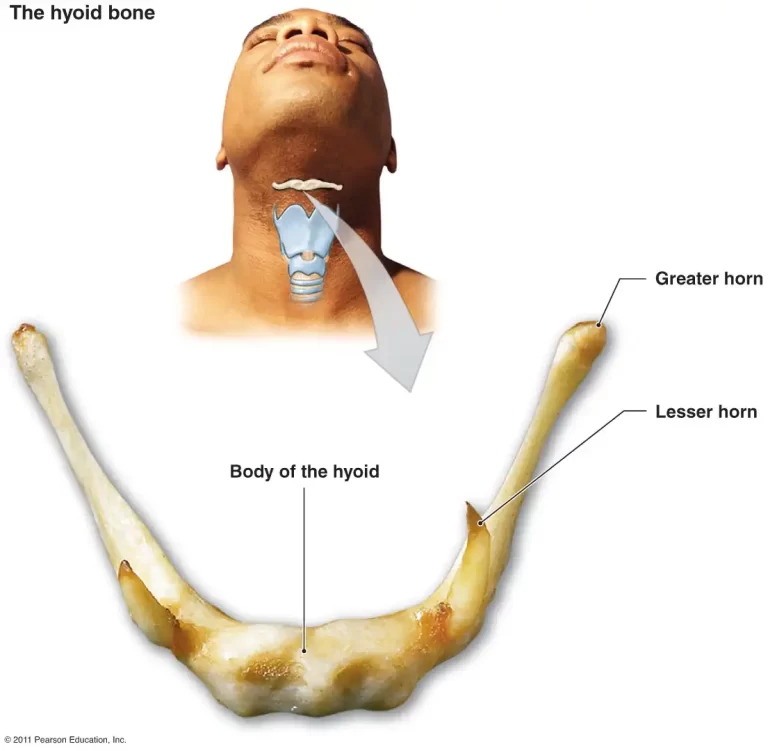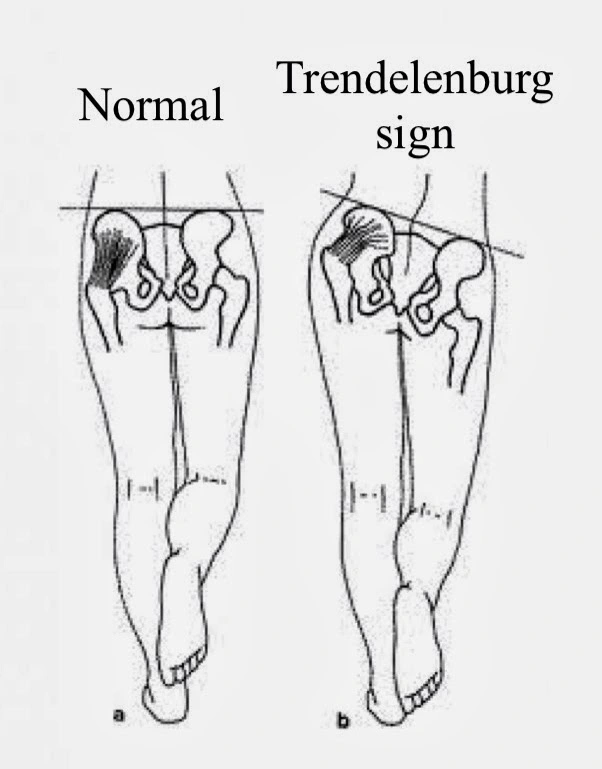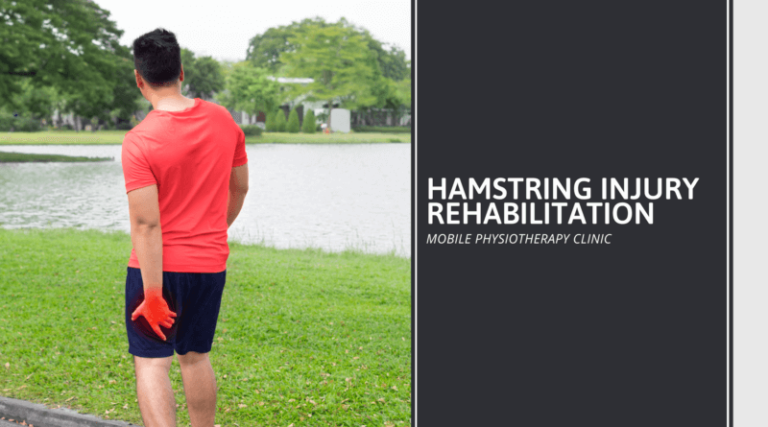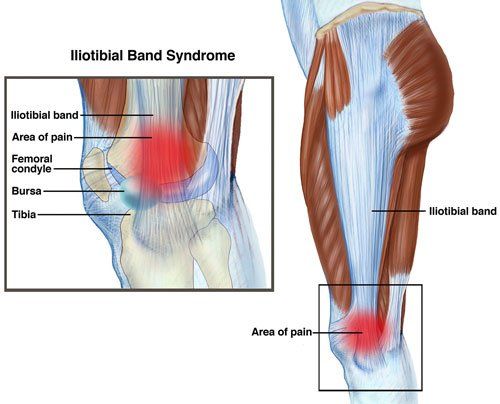Upper Arm Muscle Soreness
What is an Upper Arm Muscle Soreness?
Upper arm muscle soreness, often referred to as post-exercise muscle soreness or delayed onset muscle soreness (DOMS), is a common phenomenon experienced by individuals engaging in physical activities that challenge their muscles.
Numerous factors can contribute to upper arm soreness. Wear and tear, misuse, injuries, pinched nerves, and certain medical disorders like fibromyalgia or rheumatoid arthritis are a few examples of these. Upper arm muscle soreness might appear out of the blue or gradually worsen depending on its underlying causes.
Problems with the tendons, ligaments, muscles, bones, and nerves can all contribute to upper arm muscle soreness. It might also be connected to wrist, elbow, and shoulder joint issues. A neck or upper back issue is frequently the source of arm pain. Pain in the arms, particularly if it travels to your left arm, may indicate a heart attack.
Many things, including pinched nerves and minor injuries, can cause upper arm muscle soreness. The majority of instances go away on their own, but if the pain persists or is accompanied by other symptoms, consult a doctor.
The Upper Arm: Anatomy and its Function
The portion of the arm that runs from the shoulder to the elbow is known as the upper arm. It is composed of numerous muscles, tendons, and ligaments in addition to the humerus bone, which is the longest bone in the upper limb.
The following are some essential details regarding the upper arm:
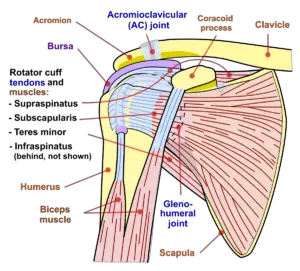
- Bones: The upper arm’s humerus is the only bone. This is a long, cylindrical bone that joins the ulna and radius bones in the forearm. Its rounded head at the top fits into the shoulder socket, and its bottom has a larger, flattened area.
- Muscle: The biceps brachii, triceps brachii, brachialis, and coracobrachialis are the four primary muscles of the upper arm. The muscle on the front of the upper arm that gives it its rounded shape is called the biceps brachii. The muscle on the rear of the upper arm that aids in elbow straightening is called the triceps brachii. Beneath the biceps brachii, the brachialis is a deeper muscle that aids elbow flexion. One tiny muscle that aids in moving the arm forward is the coracobrachialis.
- Joints: The elbow and shoulder joints are the two primary joints in the upper arm. The range of motion in the shoulder joint, which is a ball-and-socket joint, is extensive. The elbow joint is a hinge joint that provides bending and straightening of the arm.
- Blood vessels and nerves: The upper arm’s supply of blood vessels and nerves gives it movement and sensation. The brachial plexus, a collection of nerves originating in the spinal cord, is the primary nerve in the upper arm. The brachial artery, which delivers blood to the arm and hand, is the principal artery in the upper arm.
Function
The primary roles of the upper arms are:
- Movement: Our upper arms allow us to undertake a wide range of actions, from simple tasks like reaching and gripping to more complicated ones like throwing, lifting, and pushing. The upper arm’s complex interaction of muscles and bones allows for incredible flexibility and control.
- Stability: The upper arms have an important function in stabilizing the shoulder joint, which is one of the most dynamic in the body. The rotator cuff muscles, in particular, work relentlessly to maintain the humerus centered in the shoulder socket, avoiding dislocation and injury.
- Support: The upper arms support the weight of the forearms and hands, allowing us to carry items and interact with our surroundings effectively.
What is Upper Arm Muscle Soreness?
Upper arm muscle soreness is a frequent complaint shared by people of all ages and activity levels. It usually shows a dull aching or discomfort in the upper arm muscles, which might include the biceps, triceps, and shoulder muscles. The degree and location of the pain might vary depending on the underlying reason. It may involve shoulder, elbow, and wrist pain.
Numerous factors can lead to upper arm muscle soreness. Overuse or injury are the most frequent reasons. The pain may come on quickly and fade away, or it may come on gradually, depending on what’s causing it.
Causes of the Upper Arm Muscle Soreness
There are various potential reasons for muscular soreness in the upper arms, ranging from typical usage to more significant medical issues. Here are some of the most plausible suspects.
Overuse:
- Muscle strain is the most prevalent cause of upper arm stiffness, particularly after new activity or increased intensity in your regular training schedule. It happens when muscle fibers are ripped or strained.
- Tendinitis is inflammation of the tendons that link muscles to bones, which can cause discomfort in the biceps, triceps, and shoulders. Repetitive activities such as throwing, pitching, and weightlifting exacerbate this illness.
- Bursitis refers to fluid-filled sacs that cushion joints. Inflammation can cause discomfort and soreness in the shoulder or elbow.
Injury:
- Sprain: Similar to a strain, but affects the ligaments that link bones rather than muscles.
Fracture: A shattered bone in the upper arm can cause severe pain and edema. - Rotator cuff tear: A fall or quick movement can injure the tendons and muscles that surround the shoulder joint.
Other medical issues:
- Fibromyalgia is a chronic disorder that causes widespread muscular pain and soreness, notably in the upper arms.
- Arthritis: Joint inflammation from rheumatoid arthritis or osteoarthritis can cause pain and stiffness in the shoulder and elbow.
- Nerve compression: A pinched nerve in the neck or shoulder can cause discomfort down the arm. Muscle pain is one of the symptoms of some illnesses.
Additional factors:
- Poor posture: Slouching or hunching might cause pressure on the upper arm muscles.
- Dehydration: Not drinking enough water can cause muscular weariness and discomfort.
- Nutritional deficiencies: Magnesium and potassium deficits can cause muscular cramps and pain.
It’s crucial to remember that this isn’t a complete list and the exact reason upper arm ache will depend on your situation. If the pain is severe, persistent, or accompanied by other symptoms such as swelling, bruising, or fever, you should see a doctor for an accurate diagnosis and treatment plan.
Symptoms of the Upper Arm Muscle Soreness
The following are some of the most typical upper arm muscle soreness symptoms:
- Pain: This is the most noticeable sign, and it can range from mild to intense. The discomfort may be limited to a single place, such as the bicep, triceps, or shoulder, or it may be more widespread. It may also worsen with specific actions, such as raising your arms upward or bending your elbow.
- Tenderness: The damaged muscles may be sensitive to the touch.
- Stiffness: You may experience trouble moving your arm through its entire range of motion.
- Weakness: Your arm may feel weak, particularly while attempting to lift or carry items.
- Swelling: In some circumstances, swelling may occur around the afflicted muscles.
- Bruising: If you have hurt your arm, you may get bruising.
Other symptoms that may emerge depending on the underlying reason include: - Redness: This might indicate inflammation, such as tendinitis or bursitis.
- Fever: This might be an indication of an infection.
- Numbness or tingling: This might be an indication of nerve compression.
- Fatigue: This is a typical symptom of several illnesses, including fibromyalgia and arthritis.
If you are having any of these symptoms, it is crucial to consult a doctor to rule out any significant underlying problems.
Diagnosis for the Upper Arm Muscle Soreness
- To address the discomfort, your doctor must first determine its underlying cause. They’ll start with a history and physical exam, which will include questions about your activities, potential injuries, and symptoms. Depending on your symptoms, the following tests may help your doctor reach a diagnosis:
- Your doctor may ask you to lift your arms or do other simple movements to assess your range of motion. This can assist them in determining the position and origin of any potential injuries or pain.
- Blood tests can help your doctor uncover some illnesses that cause arm discomfort, such as diabetes, as well as joint inflammation.
- X-rays can assist your doctor in detecting broken or shattered bones.
- If your doctor suspects that your arm discomfort is related to potential cardiac difficulties, they may arrange tests to assess how your heart functions and the flow of blood through it.
- Ultrasounds use high-frequency sound waves to produce images of the interior of the body. They can assist your doctor in detecting abnormalities with joints, ligaments, and tendons.
- Your doctor may request MRIs and CT scans for a more thorough view of soft tissue and bones. This can help them identify difficulties.
When should you consult a doctor for upper arm muscle soreness?
While muscular soreness in the upper arms is typically harmless and resolves on its own with rest and self-care, there are several circumstances in which seeking medical help is critical.
Seek emergency medical assistance if you have:
- Sudden and intense pain may suggest a fracture, dislocation, or serious muscle rupture.
Significant swelling or bruising may indicate trauma or infection. - Numbness or tingling may suggest nerve injury.
- A fever might suggest an infection.
- Difficulty moving your arm may indicate a fracture, dislocation, or serious muscle rupture.
- The discomfort persists and is not alleviated with rest or home cures after a week or two.
- Your regular tasks are being affected by the ache.
- You have a history of injuries or other problems that may be causing the pain, such as arthritis or fibromyalgia.
- Other symptoms that accompany the pain include redness, warmth, and weariness.
- Are there any new or worsening symptoms?
Here are some other indications that might suggest the need for medical attention:
- The discomfort began with a specific injury.
- The discomfort worsens at night or during specific motions.
- You are more than fifty years old.
- You have a poor immune system.
If you have any concerns about your upper arm muscle discomfort, always err on the side of caution and seek medical attention. Early identification and treatment might assist in avoiding problems and encourage speedier recovery.
Treatment for the Upper Arm Muscle Soreness
The therapy for upper arm muscle soreness is determined by the underlying cause and level of discomfort. Here are some common home cures and medical therapies that can help:
Home Remedies:
- Rest: Avoid vigorous activities that will exacerbate the discomfort. Take a break from your typical training program to let your muscles heal.
- Ice: Place ice packs on the afflicted region for 15-20 minutes at a time, multiple times each day. To prevent irritate skin, cover the ice pack with a cloth.
- Heat: Once the initial irritation has subsided, turn to heat therapy with a heating pad or warm compress: Heat can increase blood flow and assist healing. Wear a compression bandage or sleeve to help support your muscles and minimize swelling.
- Elevation: Raise your arm over your heart whenever feasible to decrease swelling.
- Over-the-counter pain relievers: Ibuprofen and acetaminophen can help alleviate discomfort and inflammation.
- Stretching: As the pain subsides, mild stretching can assist increase flexibility and range of motion. However, if stretching causes you discomfort, avoid doing it.
Medical Treatments:
- Physical therapy: A physical therapist may teach you exercises to strengthen and stretch your muscles, increase flexibility, and avoid future injuries.
- Steroid: Corticosteroid injections can help decrease inflammation in extreme situations.
- Surgery: In rare situations, surgery may be required to heal a damaged muscle or tendon.
Stretching Exercises to Relieve Upper Arm Muscle Soreness
Here are some stretching exercises that might help with upper arm muscular discomfort.
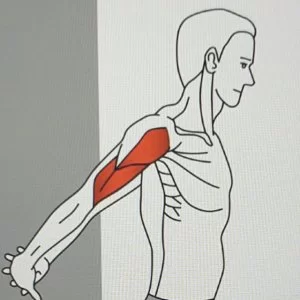
Bicep Stretch:
- Stand tall, feet hip-width apart.
- Hold your hands behind your back, fingers interlocked.
- Straighten your arms down as much as possible while maintaining your elbows straight.
- Gently press your hands down and raise your chest, feeling the stretch in your biceps.
- Hold for 30 seconds and repeat three times.
Tricep Strech:
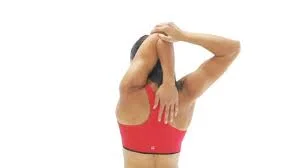
- To stretch your triceps, stand erect and place your feet hip-width apart.
- Raise one arm above and maintain your elbow straight.
- Bend your elbow, raising your hand to your head and reaching for your shoulder blade with the other hand.
- Pull your elbow gently down towards your head, feeling the stretch in your triceps.
- Hold for 30 seconds, then repeat three times with each arm.
Neck Stretch

- Stretch your neck by sitting or standing tall and keeping your shoulders relaxed.
- Slowly tilt your head to one side, placing your ear near your shoulder.
- Using your opposite hand, gently press down on your head to increase the stretch.
- Maintain for 30 seconds, then repeat on the other side.
Chest Strech
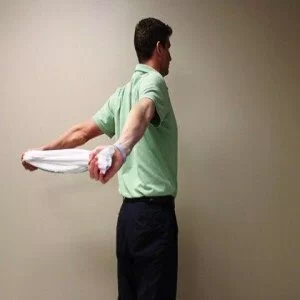
- To stretch your chest, stand tall and place your feet shoulder-width apart.
- Hold your hands behind your back, fingers interlocked.
- Gently press your chest forward and raise your chin to feel the stretch in your chest and shoulders.
- Maintain for 30 seconds, then repeat on the another side.

Doorway stretch
- To execute a doorway stretch, stand with your arms up shoulder-high and forearms resting against the door frame.
- Feel the stretch in your shoulders and chest as you move forward into the doorway.
- Maintain for 30 seconds, then repeat on the another side.
Prevention for the Upper Arm Muscle Soreness
Here are some more suggestions for reducing muscular discomfort.
- Warm up before exercising: Perform some mild aerobic and dynamic stretches to prepare your muscles for activities.
- Cool down after exercise: Perform some static stretches to assist your muscles chill down and avoid discomfort.
- Stay hydrated: Drink lots of fluids throughout the day to aid with muscle recovery.
- Nutrition Diet: Eat a well-balanced diet rich in fruits, vegetables, and whole grains to give your muscles the nutrition they need to recuperate.
- Get adequate sleep: When you’re rested, your muscles can mend themselves more effectively.
FAQs
What causes sore upper-arm muscles sore?
It might be caused by unhealthy arteries in the upper section of the body. It may also be caused by stress, a new drug, or another medical condition, such as a pinched nerve occurs when bones or tissues in the shoulder, neck, or elbow push against and compress a nerve.
How long does upper-arm muscular soreness last?
Usually, your muscles will cease aching in 2 to 5 days, and you will not require medical treatment. You should be able to manage symptoms on your own.
What are the four signs of tendonitis?
The primary signs of tendinitis are:
Tendon soreness worsens with movement
It is difficult to move the joint.
When you move the tendon, you may experience grating or crackling sensations.
Swelling may be accompanied by heat or redness.
How can I boost muscle recovery?
Light workouts often require simply a decent night’s sleep, but severe activities may necessitate several days of recuperating. Stress might make your healing time longer. Quality sleep, passive and active recuperation, massage, foam rolling, compression garments, plus hot and cold treatments are all helpful for muscle recovery
What differentiates soreness from pain in muscles?
Like, pain is not a normal reaction to physical exercise. Pain can cause a sharp, aching, or tingling feeling in your muscles or joints. While muscular discomfort is transient, pain can remain long after rest.
Why is muscular soreness so painful?
Delayed onset muscle soreness is most likely due to tiny microtears that can form in muscles. This triggers an inflammatory reaction, which is the source of your discomfort.
References
- Santos-Longhurst, A. (2023, July 13). 23 Things to know about acute and delayed onset muscle soreness. Healthline. https://www.healthline.com/health/fitness-exercise/23-things-to-know-about-acute-and-delayed-onset-muscle-soreness
- Delayed onset muscle soreness (DOMS). (n.d.). Physiopedia. https://www.physio-pedia.com/Delayed_onset_muscle_soreness_(DOMS)
- Natale, N., & Cavallo, I. (2024, January 5). 10 arm stretches to ease sore muscles and build strength, according to trainers. Prevention. https://www.prevention.com/fitness/workouts/g40748217/arm-stretches/
- 12 upper body stretches to soothe sore arms. (2023, December 19). TODAY.com. https://www.today.com/health/diet-fitness/upper-body-stretches-rcna38670

